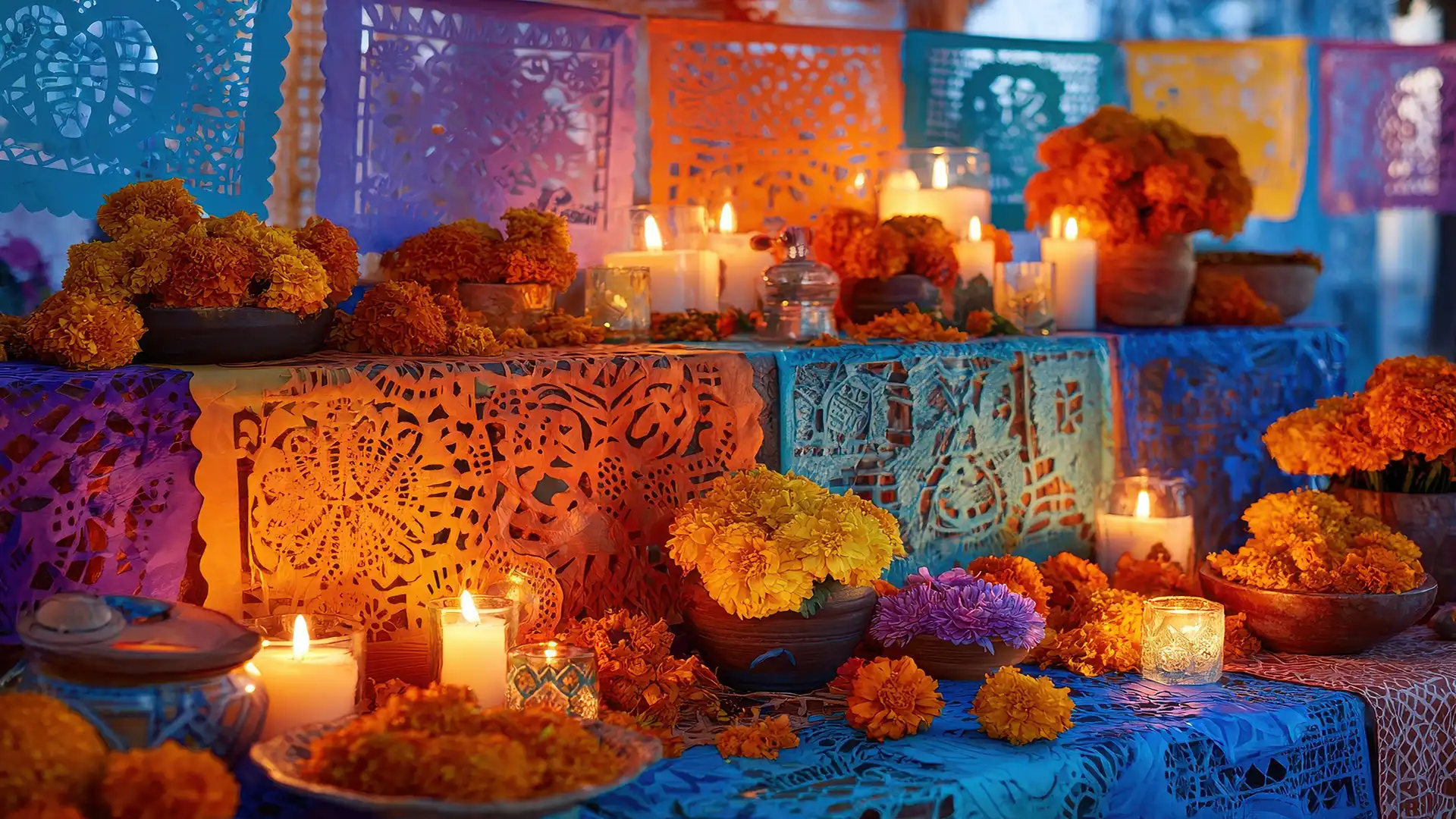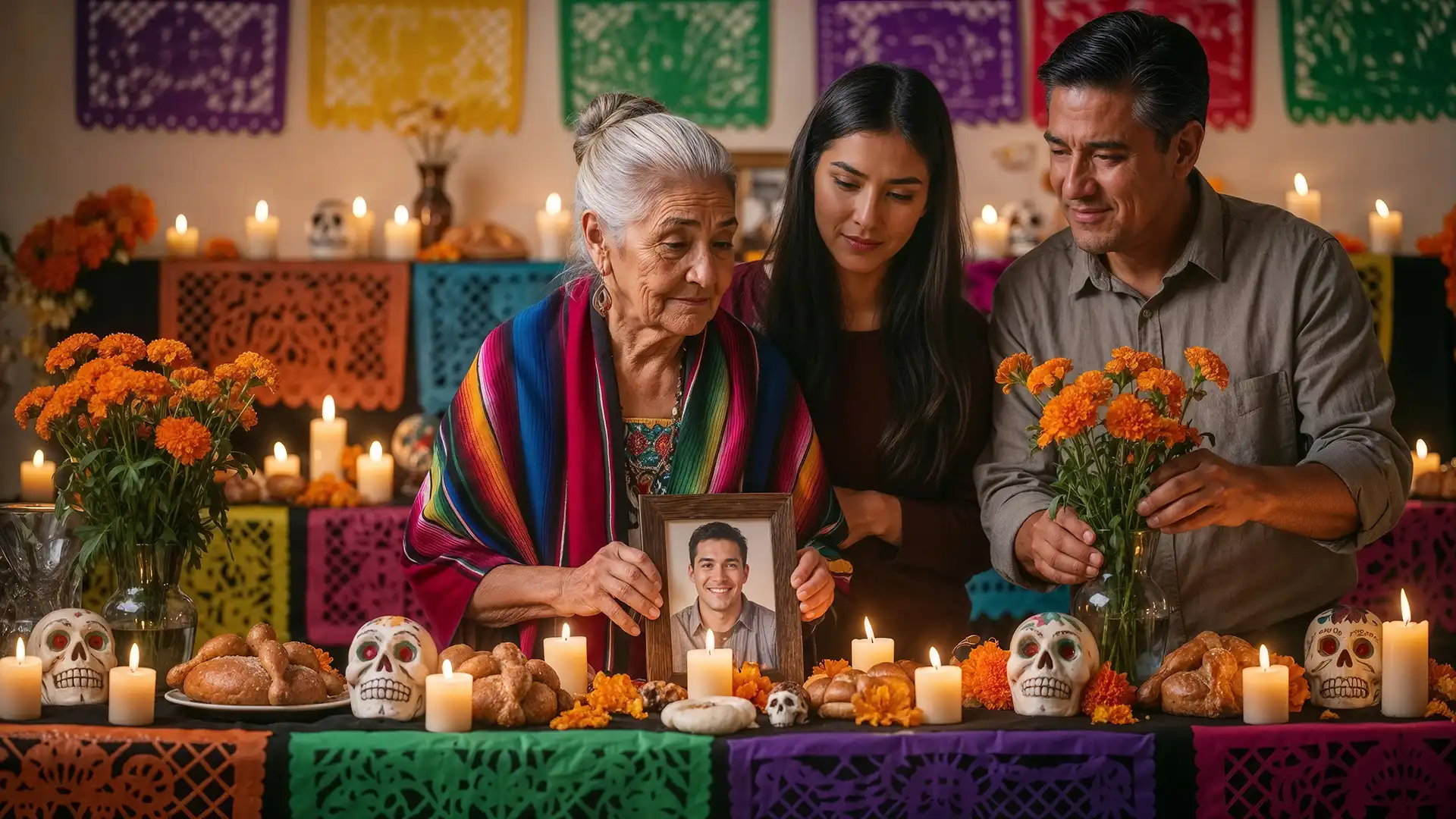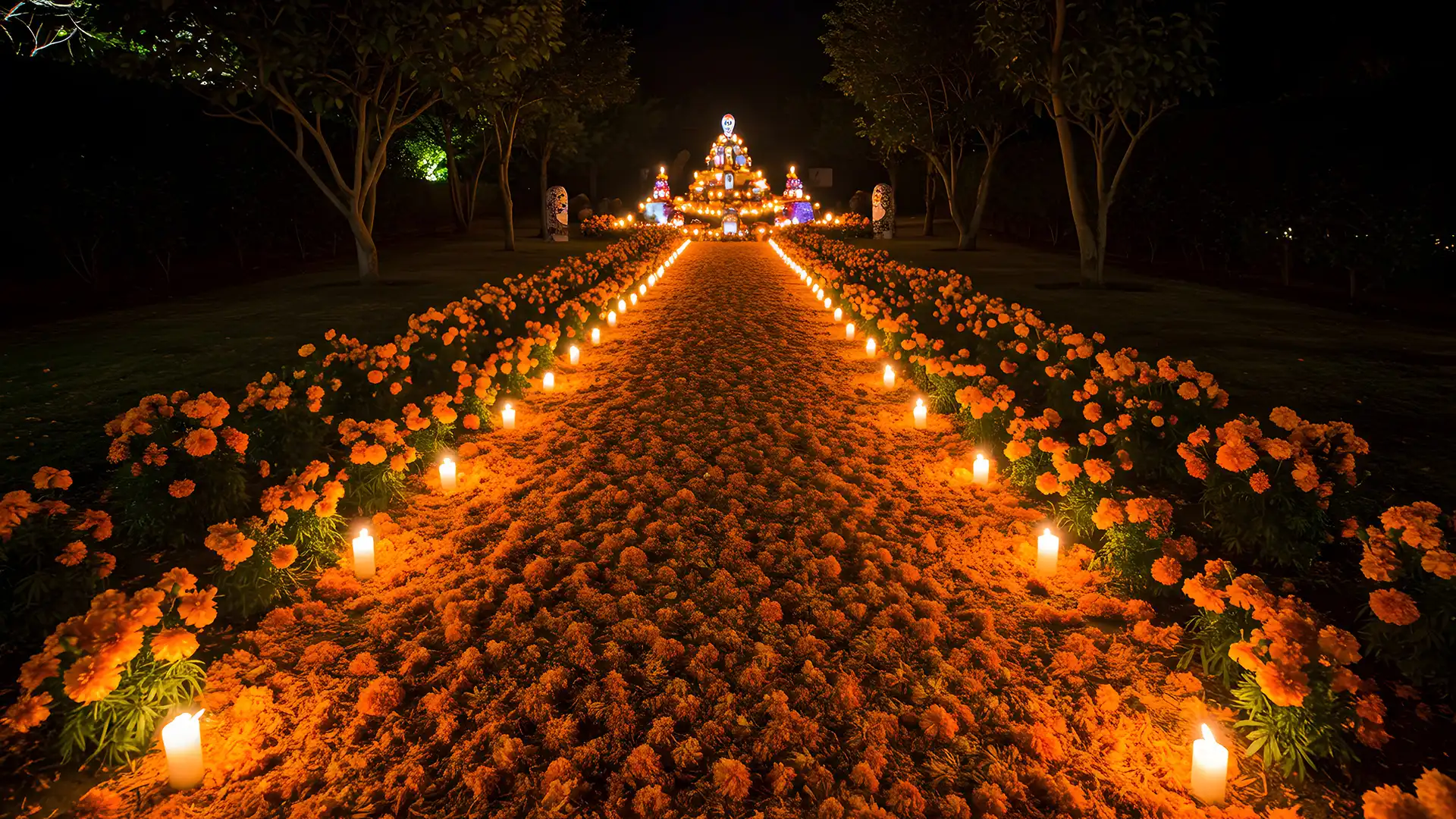Day Of The Dead In The Yucatán Peninsula
When people think about the Yucatán Peninsula, they usually picture turquoise waters, white- sand beaches, cenotes, and ancient Mayan temples surrounded by lush jungle. But if you visit between late October and early November, you’ll discover another side of this paradise one filled with candles, colors, and a deep connection to life and death.
That’s when Mexico celebrates the Day of the Dead, or Día de Muertos, a unique tradition that transforms entire cities and small towns into living altars. In Yucatán and Quintana Roo, this celebration isn’t just about remembering those who have passed away it’s about honoring life itself, guided by the ancient spirit of the Mayan culture.
Beyond a Holiday: Celebrating Life, Memory, and Tradition
Forget the idea of death as something dark or sad. In Mexico, and especially in the Yucatán Peninsula , death is seen as part of life, another step in an endless cycle. The Day of the Dead is all about celebrating that journey.
Families decorate their homes with candles, flowers, food, and photos of their loved ones. The air smells like copal incense, fresh tamales, and sweet bread. Laughter mixes with music. Stories are told. Memories are shared. It’s beautiful and emotional at the same time not a goodbye, but a reunion.
Every region in Mexico has its own version of this tradition, but here in the southeast, the Mayan influence makes it special. This region adds layers of spirituality and symbolism that connect the living with their ancestors in a deeply meaningful way.
You’ll often hear stories of ancestors told by grandparents while children sit nearby, listening and laughing. This storytelling isn’t just a tradition it’s how the Mayan people keep their identity alive. And when you’re there, you feel it. You sense that every light, every scent, and every smile carries centuries of history.
A Taste of the Tradition
If there’s one thing that connects all Mexicans during the Day of the Dead, it’s food. In Yucatán and Quintana Roo, that food tells stories as rich as the culture itself.
The star of the season is the mucbipollo or pib. Imagine a giant tamal made with corn dough, chicken, and spices, wrapped in banana leaves, and cooked underground. It’s a dish that takes hours to prepare, shared with family and neighbors. People say that eating pib connects you with the earth and your ancestors and after tasting it, you’ll understand why.
But the food journey doesn’t stop there. On the coast of Quintana Roo, you’ll find the delicious pescado tikinxic, fish marinated in achiote and sour orange, then slowly grilled over wood fire. Every bite carries the smoky, tangy flavors of the Caribbean.
Then there are panuchos and salbutes, small corn tortillas filled or topped with beans, turkey, avocado, lettuce, and pickled onions simple but full of flavor. And let’s not forget the sweet side of things: marquesitas, crispy rolled crepes stuffed with cheese and Nutella, sold by street vendors on every corner.
Each dish, whether it’s ancient or modern, reflects the region’s heart — a mix of Mayan roots and coastal energy. Sharing these meals isn’t just about eating; it’s about remembering, connecting, and celebrating life in the most delicious way possible.
Traditions That Bring the Spirits Home
The Day of the Dead is full of symbols, and in Yucatán and Quintana Roo, they come alive in every street, home, and plaza.
The most important part is the altar , or ofrenda. Families decorate them with photographs, candles, flowers, food, and favorite drinks of their loved ones. You might see bottles of soda, pieces of bread, or even cigarettes because the idea is to welcome the spirits with the things they loved most in life.
The flower used the most is the cempasúchil , a bright orange marigold believed to guide the spirits with its scent and color. When you walk through a cemetery or plaza filled with them, it feels almost like walking inside a painting glowing with life.
In Yucatán, another tradition stands out: the Hanal Pixán, which means “food for the souls” in Mayan. It’s the local version of Day of the Dead, celebrated from October 31 to November 2. Each day has a meaning: one for the children, one for the adults, and one for all souls. Families prepare food, visit cemeteries, and leave offerings, believing their loved ones return for a short visit.
If you visit during these dates, you’ll feel how everything slows down. It’s peaceful, respectful, yet joyful. It’s a moment when life and death meet and it feels completely natural.
Where to Experience It All
The beauty of celebrating Day of the Dead in the Yucatán Peninsula is that every town has its own touch. Whether you’re in a busy city or a small village, you’ll find something special happening.
The beauty of celebrating Day of the Dead in the Yucatán Peninsula is that every town has its own touch. Whether you’re in a busy city or a small village, you’ll find something special happening.
Mérida, Yucatán: The capital becomes the heart of the celebration with the famous Paseo de las Ánimas the “Walk of the Souls”. Locals dress in traditional white clothing and paint their faces like skulls. Thousands walk with candles through the streets, creating a sea of light and music. The city also hosts the Festival de las Ánimas, with art, food, and concerts.
Valladolid, Yucatán: This colonial town offers a quieter but equally moving experience. The main square fills with altars, traditional dances, and local food. It’s the perfect place to feel the authentic rhythm of Yucatecan life.
Cozumel and Playa del Carmen: These coastal towns bring the celebration to the beach. Imagine altars made of seashells and candles lighting up the shoreline. Some hotels organize cultural shows, while local communities hold Mayan rituals honoring the ancestors.
Xcaret Park, Riviera Maya: If you’re looking for something big, this is the spot. The Festival of Life and Death Traditions is one of the most famous events in Mexico. It combines dance, theater, music, and food in a massive cultural showcase that honors the country’s ancestral roots.
Each place offers something different — from spiritual ceremonies to modern art displays but they all share one thing: a deep respect for life, death, and memory.
Why You Can’t Miss This Time of Year
Traveling through Yucatán and Quintana Roo during the Day of the Dead isn’t just sightseeing. It’s feeling the heartbeat of Mexico. It’s one of those trips that change the way you see things.
You’ll see families laughing while setting up altars, kids running with sugar skulls in their hands, and elders sharing stories that sound like poetry. Cemeteries become places of color and music instead of silence. Even if you didn’t grow up with this tradition, it’s impossible not to be moved by it.
And it’s not only about culture it’s about reflection. Being there makes you think about your own connections, your roots, and the people you love. Somehow, between the candles and the laughter, you realize that this celebration is not about mourning it’s about love that never fades.
For many travelers, this experience becomes one of the most powerful memories of their trip to Mexico. It’s not just about seeing, but about feeling. You don’t just observe; you belong.
A Living Legacy
What makes the Day of the Dead in the Yucatán Peninsula so unforgettable is how alive it feels. It’s not a performance or a tourist show — it’s a living tradition, passed down through generations.
Every detail, from the food to the music, has meaning. Every candle tells a story. Every song echoes the voices of those who came before.
If you don't find your hotel / destination or you have a special request, please contact us: contact@odigootravel.com
The Mayan people understood something that modern life often forgets that death isn’t an end, it’s a return. And in these days filled with color, light, and emotion, you can feel that truth in every moment.
When the night falls over Mérida or the waves crash softly on a Cancun beach, and you see the glow of a thousand candles in the distance, you’ll understand what this celebration is really about. It’s not just remembering the dead it’s keeping them alive through love, food, and memory.
So, if you ever dreamed of seeing Mexico at its most authentic, plan your trip to Yucatán and Quintana Roo during the Day of the Dead. You’ll find more than beauty; you’ll find meaning. And maybe, just maybe, you’ll feel what the Mayans knew all along that to honor death is to celebrate life.
Need Transportation? Get a quote!
Our travel consultants are ready to help you. Schedule a call
Related Topics
PLANNING A TRIP TO CANCUN?
OUR TRAVEL CONSULTANTS ARE READY TO HELP YOU.
Related Topics
Continue Exploring







